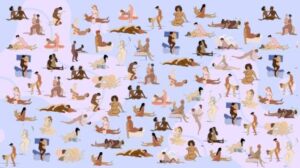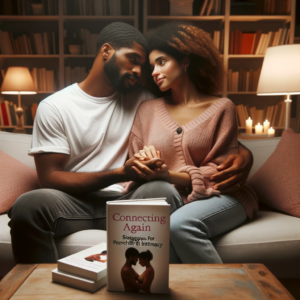
Greetings, Bold Explorers!
Imagine this: you’re at an art gallery, admiring a classic nude painting. The brush strokes, the play of light and shadow, the raw, human beauty – it’s all rather captivating. But then, a thought bubbles up: how does nudity tie into our understanding of sexuality? Are they two sides of the same coin, or is there more to the picture? Well, buckle up, curious minds, because we’re about to delve into the intricate dance of nudity and sexuality!
The Naked Truth About Nudity
Before we embark on this journey, let’s first get our facts straight. When we say “nude,” what do we actually mean? It’s simply the state of being without clothes. It’s natural, it’s normal, and it’s how we enter the world. But, as we grow and society’s norms seep in, nudity often becomes associated with sexuality. So, why is that?
Clothed in Culture
Our perceptions of nudity are largely shaped by the cultures we grow up in. In some cultures, nudity is a part of everyday life, like in certain tribal societies, whereas in others, it’s seen as private, sacred, or even sinful. Here are a few key points to ponder:
- Context Matters: Nudity isn’t inherently sexual; context plays a vital role. For instance, medical examinations involve nudity but aren’t sexual.
- Shaping Perceptions: Media often portrays nudity in a sexual context, influencing our perceptions.
- Cultural Norms: Different cultures have varying views on nudity, shaping how we associate it with sexuality.
- Taboo and Forbidden Fruit: In societies where nudity is taboo, the “forbidden” nature can sexualize it.
- Individual Interpretations: Each person interprets nudity differently based on their experiences and beliefs.
- Sexual vs. Non-Sexual Nudity: Nudity can be both sexual and non-sexual. It’s about the intent and context, not the state of undress itself.
The Dance of Nudity and Sexuality
Now, let’s delve into the nuanced relationship between nudity and sexuality. Yes, they’re often linked, but they’re not synonymous. Nudity can be empowering, liberating, and even a form of protest. It can be a way to reclaim one’s body from societal expectations.
On the other hand, nudity can also be sexual and erotic. It can enhance intimacy between partners and be a part of one’s sexual identity. Thus, it’s not a black-and-white issue; it’s a spectrum, with nudity and sexuality dancing together in a complex choreography.
Shedding the Layers
If we can separate nudity from sexuality in our minds, we can start to see the human body for what it truly is – a remarkable piece of natural art. This shift in perspective can lead to:
- Increased Body Positivity: Seeing the body as natural rather than sexual can boost self-esteem and body positivity.
- Greater Comfort with Nudity: If nudity is seen as natural, it can be less awkward and more comfortable.
- Empowerment: Owning one’s nudity can be empowering and liberating.
- Improved Sexuality: Understanding the distinction can also enhance one’s sexual experiences.
- Healthy Attitude Towards Sex: It can foster a healthier and more open attitude towards sex.
- Shattering Stereotypes: It can help break down harmful stereotypes and norms associated with nudity and sexuality.
Naked Musings
As we wrap up our exploration, it’s clear that nudity and sexuality are like two dancers on a stage. Sometimes they perform together, sometimes separately, but they always influence one another. While it’s easy to simplify and say nudity equals sexuality, the reality is far more nuanced. The beauty lies in understanding this complexity, in embracing the spectrum of experiences that make us wonderfully human.
So, my brave explorers, I leave you with this: the next time you encounter nudity – be it in art, media, or your own reflection – take a moment to appreciate it for what it is. A celebration of the human form, a testament to our shared vulnerability, and a chance to redefine our own narratives of sexuality.







